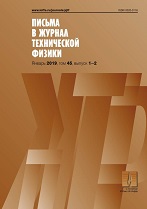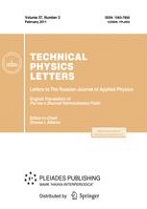|
Impact and “delayed” surface damage to ZnS–CVD ceramics
I. P. Shcherbakova, A. A. Dunaevb, A. B. Sinania, A. E. Chmela
a Ioffe Institute, St. Petersburg
b Vavilov State Optical Institute, St. Petersburg, Russia
Abstract:
Point damage to the surface of ZnS ceramics synthesized by chemical vapor deposition (CVD) was produced by means of either a sharp striker impact or slow indentation of a Vickers pyramid and monitored by measuring time series of strain-induced acoustic emission response. In the case of impact, the duration of acoustic emission was 0.3–0.5 ms, while the indentation was accompanied by a 3- to 5-ms-long initial active phase of emission followed by the generation of weak sporadic signals over a time period of 80–100 ms. Statistical analysis of the recorded time series showed that the energy distribution in impact-induced acoustic pulses was always random (Poisson's type), while the signals induced by indenter penetration obeyed a power law of the Gutenberg–Richter type. The different characters of energy release observed for the two types of load application are explained by specific features of the temporal regime of self-organized dislocations, the accumulations of which acted as the centers of microcrack nucleation.
Keywords:
ZnS, ceramics, impact loading, indentation, acoustic emission.
Received: 15.03.2019
Revised: 07.08.2019
Accepted: 07.08.2019
Citation:
I. P. Shcherbakov, A. A. Dunaev, A. B. Sinani, A. E. Chmel, “Impact and “delayed” surface damage to ZnS–CVD ceramics”, Pisma v Zhurnal Tekhnicheskoi Fiziki, 45:22 (2019), 39–42; Tech. Phys. Lett., 45:11 (2019), 1155–1158
Linking options:
https://www.mathnet.ru/eng/pjtf5267 https://www.mathnet.ru/eng/pjtf/v45/i22/p39
|


| Statistics & downloads: |
| Abstract page: | 41 | | Full-text PDF : | 20 |
|





 Contact us:
Contact us: Terms of Use
Terms of Use
 Registration to the website
Registration to the website Logotypes
Logotypes








 Citation in format
Citation in format 